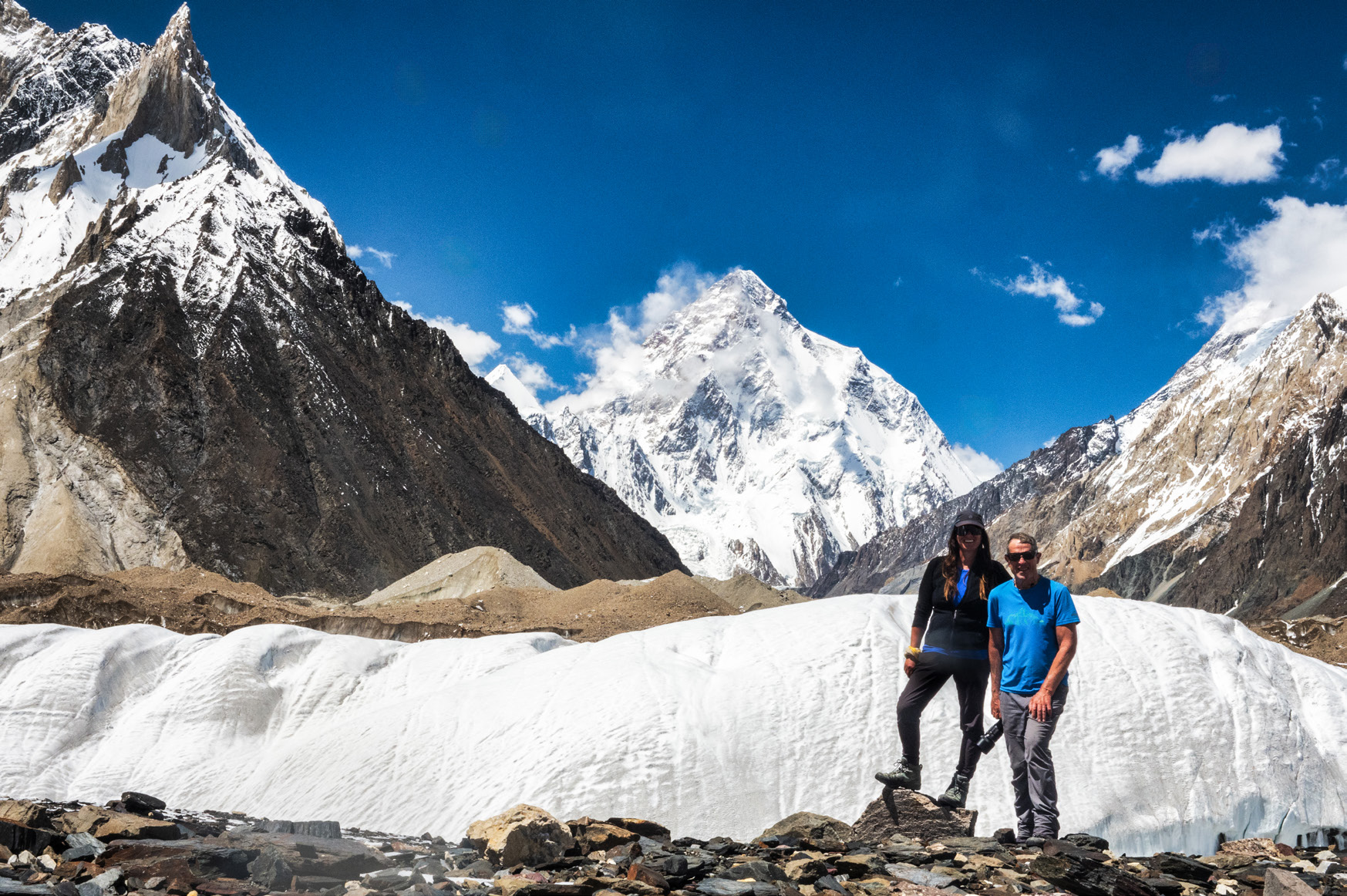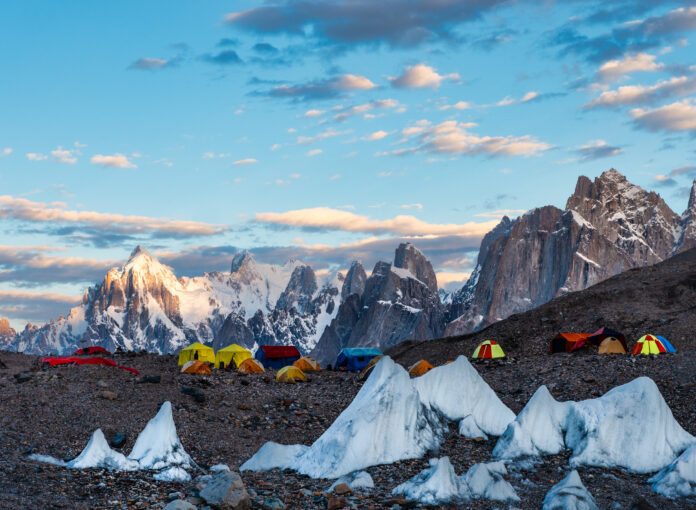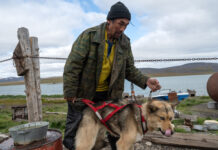Text Anita Verde Images Anita Verde and Peter Marshall
For decades, scientists have believed that glaciers in the Karakoram Range are defying the trend of those across the globe – resisting glacial melt due to human-induced global warming. But as we trek up the Karakoram’s second-longest glacier in July, as the United Nations announces the world’s hottest ever month on record, does the melting ice beneath our feet suggest the so-called Karakoram Anomaly is slowing? Or is there a ray of hope it will continue to delay the inevitable?
It is midsummer in Pakistan’s northern region of Gilgit-Baltistan, on the treacherous and unforgiving Baltoro Glacier, the second longest in the Karakoram Range and one of the largest outside the polar regions. We are trekking our way to the amphitheatre of Concordia, the confluence of the Baltoro, Godwin- Austen, Gasherbrum and Vigne Glaciers. Otherwise known as the “Throne Room of the Gods”, this is an otherworldly place flanked by the greatest concentration of the world’s highest peaks, including the second highest, K2. At an altitude of almost 5,000 metres, it’s hot – really hot. “I’m no expert, but the glacier looks like it’s dying,” proclaims Martin Mazurek, a fellow expedition group member and Professor of Geology at the University of Bern in Switzerland.
THE DEATH OF A GLACIER
Sadly, dying glaciers are fast becoming part of the tragic tale that is human-induced climate change. In August 2019, around 100 people scrambled up a mountain to mourn the death of Iceland’s Okjökull glacier – otherwise known as OK. Broken-hearted Icelandic glaciologist Oddur Sigurdsson produced a death certificate and announced that the glacier was no longer OK at all. The principal cause of the glacier’s demise: “excessive heat” and “humans”, he said. “is tragic tale is indeed one of great loss. Biodiversity fading, extinction of species, sea levels rising and habitats shrinking – all are happening so subtly that the reality is difficult to grasp. But when you are on the glacier itself, the evidence is staring you right in the face. Yet, just because we can see the glacier melting under our feet, does this mean it is actually dying?
THE KARAKORAM ANOMALY
Unlike in Greenland, where its immense glacial ice sheet has lost mass each year for the past quarter century, scientists have proclaimed for decades that glaciers in the Karakoram Range appear to be stable or even growing – a phenomenon they term the “Karakoram Anomaly”. It’s one of the biggest mysteries of glacial science. Any glaciologist will tell you that the common behaviour of glaciers is that they fluctuate, either advancing or retreating depending on the amount of snowfall at higher elevations and the snow melt at lower elevations. If the snow that falls in the upper elevations is equal to the ice that melts at lower elevations, then the glacier is deemed to be in equilibrium. For decades, scientists have claimed. that some glaciers in the Karakoram Range are exactly that, and have not changed at all. Some have even advanced, damming river valleys, causing the accumulation of glacial meltwater, and increasing the risk of catastrophic glacial floods. Scientists believe the anomaly is caused by increased precipitation or “Western Disturbances” – weather systems associated with extreme rainfall events in northern India during the boreal winter – and the concept that snowfall is the dominant precipitation that occurs over the Karakoram Range during winter, which in turn plays a critical role in sustaining the snowpack at high elevations. But there appears to be evidence that the Karakoram Anomaly may now be slowing.
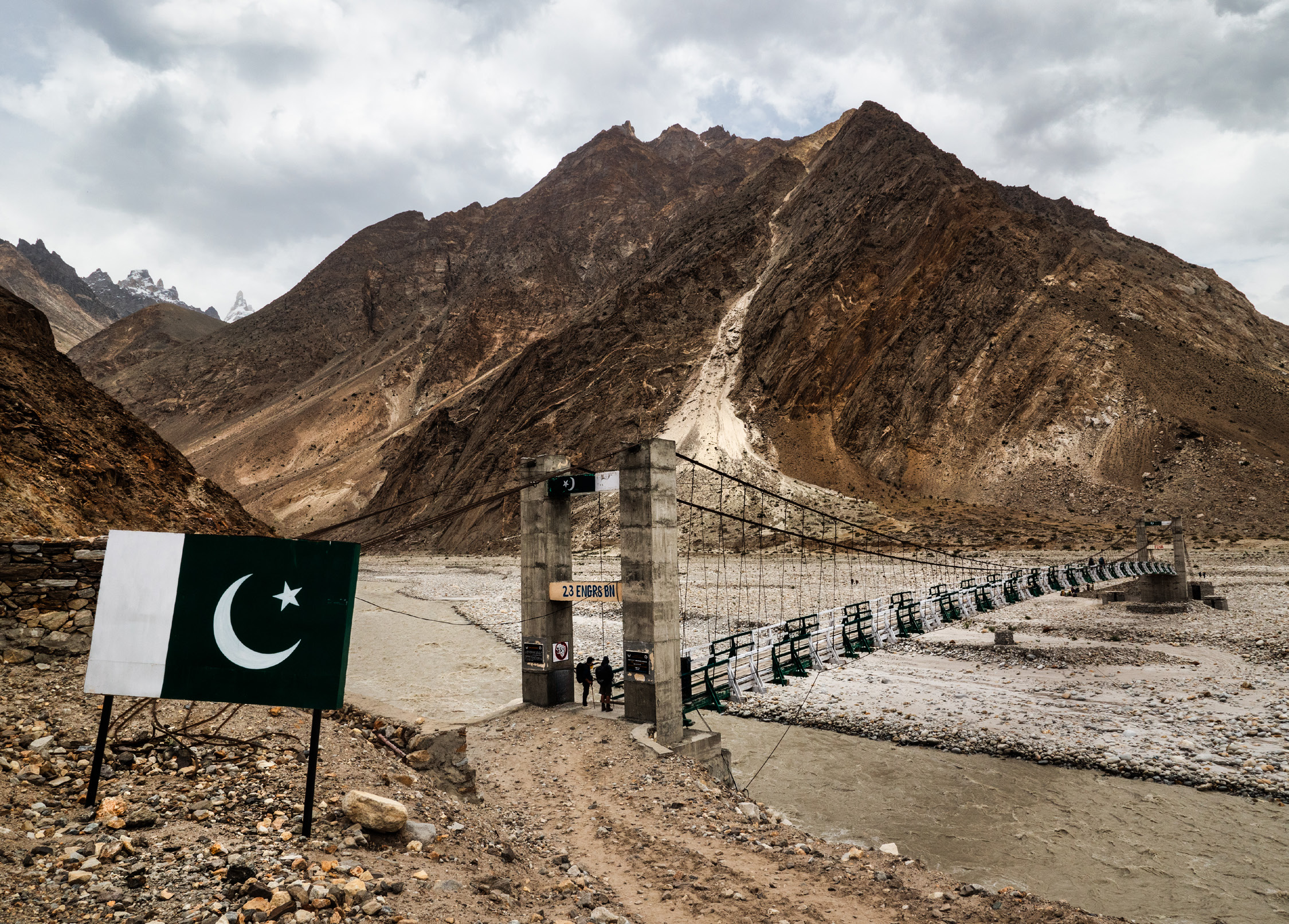
Findings from a recent study conducted by the Asia-Pacific Network for Global Change Research (APN) do not support the suggestion of stability or anomalous growth of the glaciers in the Karakoram, and in contrast suggest the Karakoram’s glaciers may no longer be stable, but will lose mass in the future due to temperature increases alongside precipitation decreases. The paper, titled “Climate change and spatio-temporal trend analysis of climate extremes in the homogeneous climatic zones of Pakistan during 1962–2019”, was published in February 2022. The study states that while the period from 1960 to 1990 saw increasing precipitation and decreasing maximum and minimum temperatures at meteorological stations located in the Karakoram, decade-long analysis during 1991–2019 showed a decrease in precipitation (i.e., less snowfall at higher elevations) and an increase in temperature (maximum and minimum). Their findings suggesting that slight temperature increases alongside decreases in precipitation support the slight mass loss of glaciers in the Karakoram, and therefore indicates a change to previously supported views on the Karakoram Anomaly.
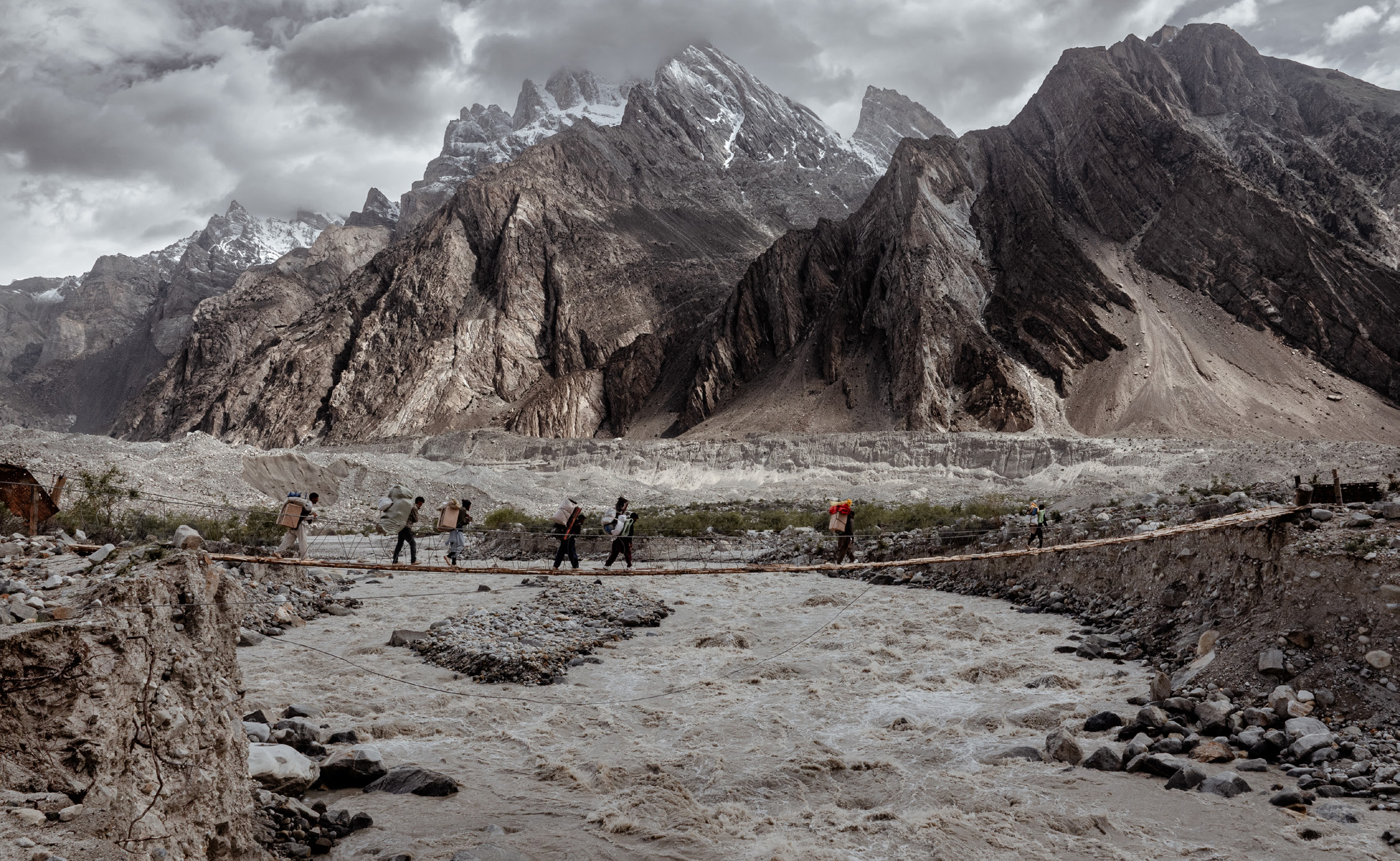
Having studied glaciers in the Karakoram since 2004, co-author of the study, Dr Christoph Mayer, Senior Researcher at the Bavarian Academy of Science and Humanities in Munich, agrees the conditions for the Karakoram Anomaly are now slowly diminishing. “The increased precipitation seems not to hold anymore. In contrast, the temperature anomaly is reducing and adapting to the global trend. These are indications that the anomaly will probably disappear in the near future,” he says, adding, “There is still a lot which is unclear about the future evolution of the Karakoram glaciers.” Understanding the anomaly is not straightforward, and as we discovered, any scientist who studies the glaciers here exposes themselves to personal risk. It takes a long, arduous day of driving in jeeps on frightening cliff side terrain exposed to rockfall, followed by a two-day trek on foot, just to get to the snout of Gilgit Baltistan’s Baltoro Glacier. Everything is unstable, rough, and loose underfoot, and conducting research here is not an easy task.

THE ROLE OF DEBRIS
Alongside the anomaly, scientists also attribute the stability of Karakoram glaciers to the debris that blankets them – though it is complicated to connect the two phenomena. When the debris that covers the glacier is thin, say a coating of dark coloured rubble or rocks, it absorbs more energy from the sun, leading to faster melt. But in the Karakoram, the debris deposited on the glaciers from rockfall appears to be quite thick in many parts, and instead can insulate the ice. “thick debris protects glaciers from melt. However, some of the effect is reduced by ‘melt hotspots’ like ice cliffs and glacier ponds,” says Dr Mayer. “”e glaciers are definitively larger than they would be without debris because the [debris] protection of the ice in the lower part allows the glaciers to extend their tongues to lower altitudes.” This explains why glaciers in the Karakoram Range are found to extend down to lower altitudes, even though melt conditions are more intensive there. Many other glaciers the world over are not characterised by such debris and are therefore melting at a much faster rate. In Greenland, increased temperatures create thousands of azure blue glacial lakes that absorb energy from the sun and accelerate the rate of melting, causing the Greenland ice sheet to slide ever faster towards the sea. It is estimated to be carving 20 metres from its face per day, three times faster than it did 30 years ago, and contributing one quarter of the world’s sea level rise.
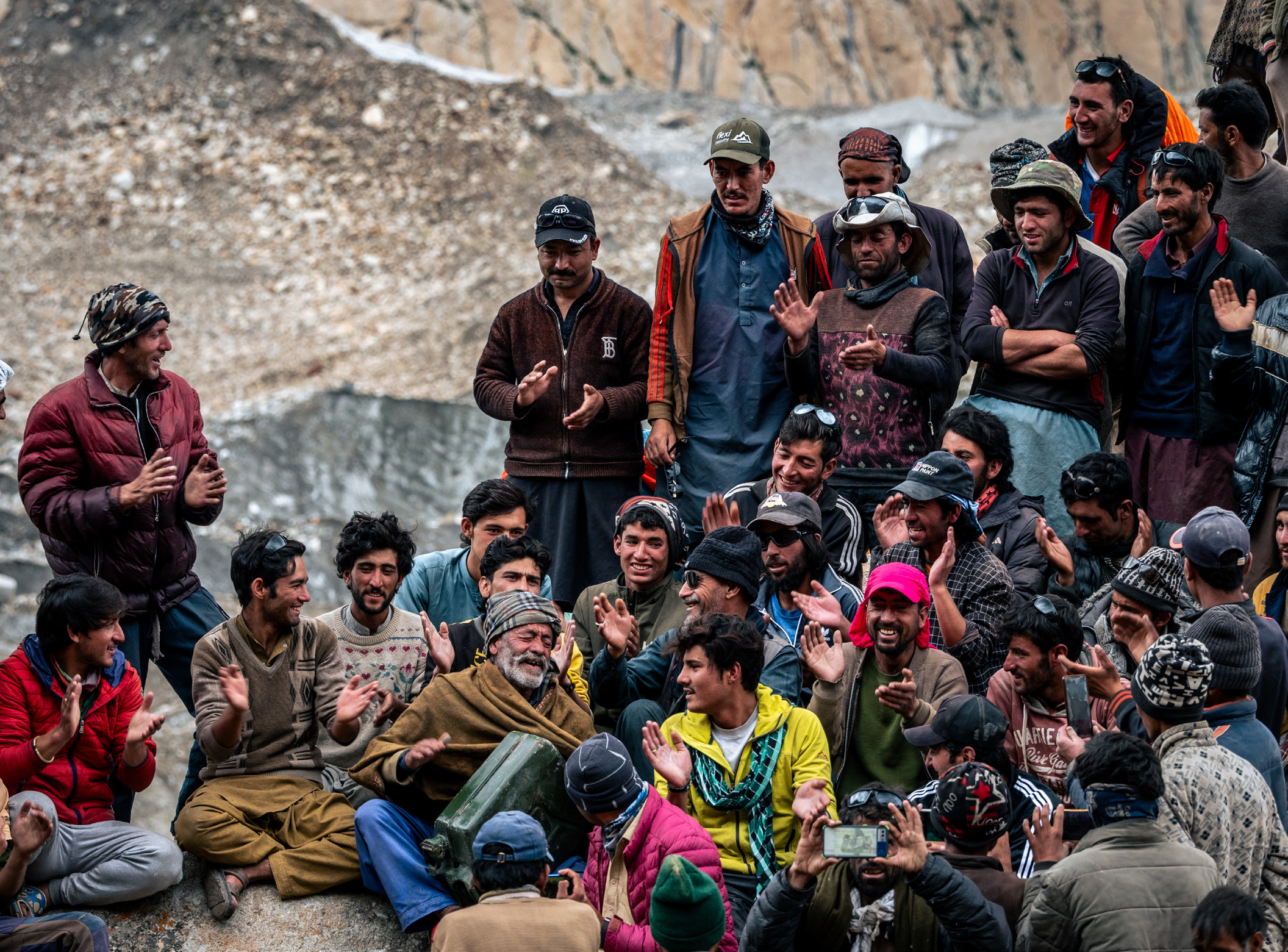
CLIMATE CHANGE INJUSTICE
With a population of almost 250 million, Pakistan is estimated to contribute only around 0.8 percent of the global carbon footprint, yet bears a disproportionate burden from climate change impacts. Pakistan regularly suffers extreme heat, with some of the highest and most severe temperatures the world has seen in recent years. Monsoon rains and catastrophic flooding between June and August 2022 submerged one third of the country. Over 33 million people were deeply impacted by the floods, which took an estimated 1,700 lives and le’ nearly eight million displaced. Over 20 million were in need of humanitarian assistance. The United Nations deemed the event an “unprecedented climate-induced disaster”. So, if the Karakoram Anomaly is also slowing, what does this mean for Pakistan’s future? With the country having a lower coping capacity than many other developing nations, the future implications for people that are dependent on both large and small glaciers for their day-to-day water needs may become dire. With glacial meltwater from the Karakoram’s glaciers dominating the flows of perennial river systems, including Pakistan’s mighty Indus, even the slightest fluctuation in annual glacier-melt could
directly impact the lives of millions of people in the surrounding drylands. “Many local communities get their water from smaller glaciers, because the larger glaciers have an extremely high sediment load in the water,” points out Dr Mayer. “Small glaciers, though, are prone to disappear within the coming decades, which will make it more demanding for communities to find new water sources.” But it is not just about water scarcity. “At the same time, it is predicted that summer meltwater amounts will increase with global warming for at least the next decades, and because the large glaciers in the Karakoram still have extensive ice areas at low elevations, it’s more likely that flood events and increased erosion will occur.”

It is well documented that the region is prone to natural hazards. Earthquakes, floods, avalanches, landslides, !ash and mud flooding, and glacial lakeoutburst floods already characterise the region; so any slight change to the Karakoram Anomaly will be even more widely felt by communities here. Over the longer term, it is expected that large glaciers in the Karakoram will lose considerable ice mass, leading to increased meltwater in the summer. “At the same time, extensive regions of sediment will become ice free and prone to be washed away by heavy monsoon rains,” warns Dr Mayer, “considerably increasing the risk of mud flows and river blockages.”
Zubair Amad Khan, Assistant Director of the Gilgit-Baltistan Disaster Management Authority, says he has already seen the impact of climate change on communities in Pakistan over the past decade. “the situation we are facing here in Gilgit- Baltistan, and observing increases in disaster events, clearly shows that climate change is a reality,” he
says. “These indigenous mountain communities, with no contribution to global warming, are suffering the most.”
WHAT DOES THE FUTURE HOLD?
During one month in the Karakoram, we witnessed its many changing faces. Trekking through striking mountain wilderness on dizzying trails above the swirling Braldu River before ascending the immense Baltoro Glacier gave us an intimate perspective of the unrelenting mountain landscape many communities call home. From our base camp at Concordia, our forays into the depths of the mountains revealed an unrivalled assemblage of the planet’s highest peaks. It is these peaks that define the inner Karakoram, not only capturing the imagination of mountaineers, but more importantly giving life to their vast, rugged glaciers. Often, we heard the glacier “breathing”: a faint grumble, rocks tumbling, or an ice cornice collapsing underfoot. The glacier’s vital signs are ever so present and moody.
But in less than one month, we saw incredible change. A chunk of ice the size of a small bus broke the silence as it crashed into a large glacial pond. We skirted around rivers of meltwater that disappeared into crevasses, only to re-emerge at the glacier’s snout as a vast, raging river. This river swelled considerably in size and intensity, and washed away trails and roads we had taken just weeks earlier. At times, we experienced near heat exhaustion, dodged rockfalls, and even narrowly avoided a landslide that tragically took the lives of local people. Despite this, people here go about their day-to-day business with beaming smiles, as if these hardships are just part of everyday life. As we arrived back to Pakistan’s hot and tumultuous capital of Islamabad, we were not surprised to hear the United Nations announce the world had experienced its hottest ever month on record. Sadly, climate injustice is already so real in Pakistan, and any change to the Karakoram Anomaly will only further exacerbate the delicate climate situation here. While the future evolution of Karakoram glaciers remains unclear, the changes we witnessed over such a short period were profound. In the wake of ever-increasing global temperatures, we fear the glaciers are destined to lose mass in the future. The Karakoram Anomaly appears to only be delaying the inevitable. The tipping point may have now arrived.
